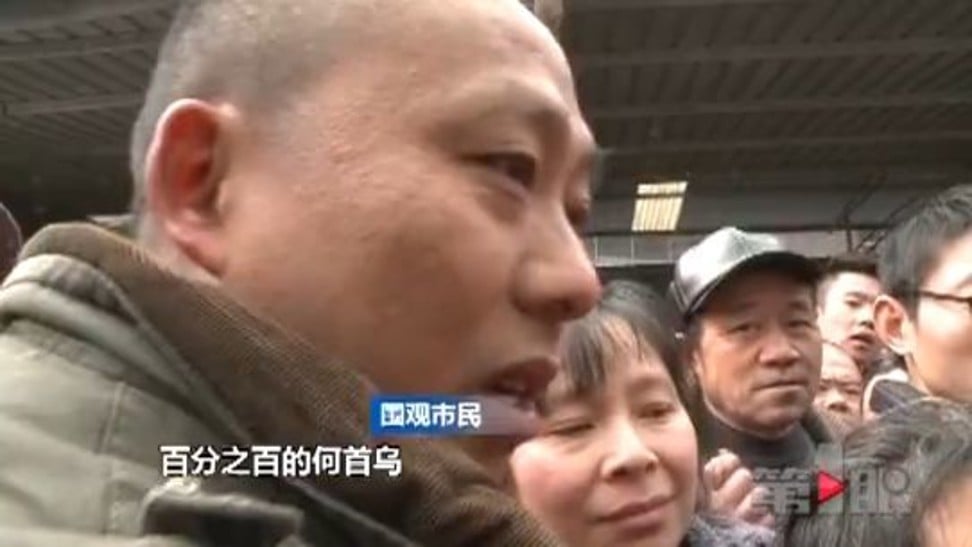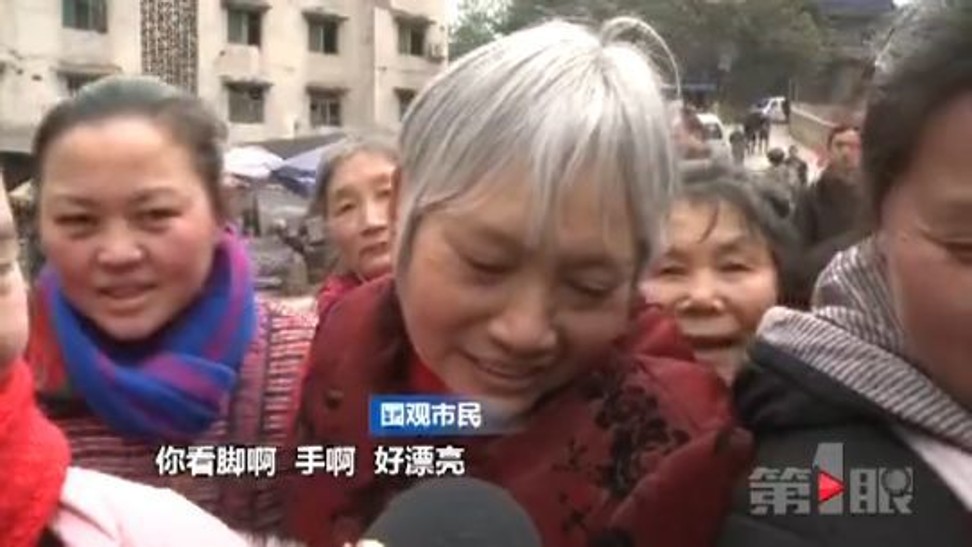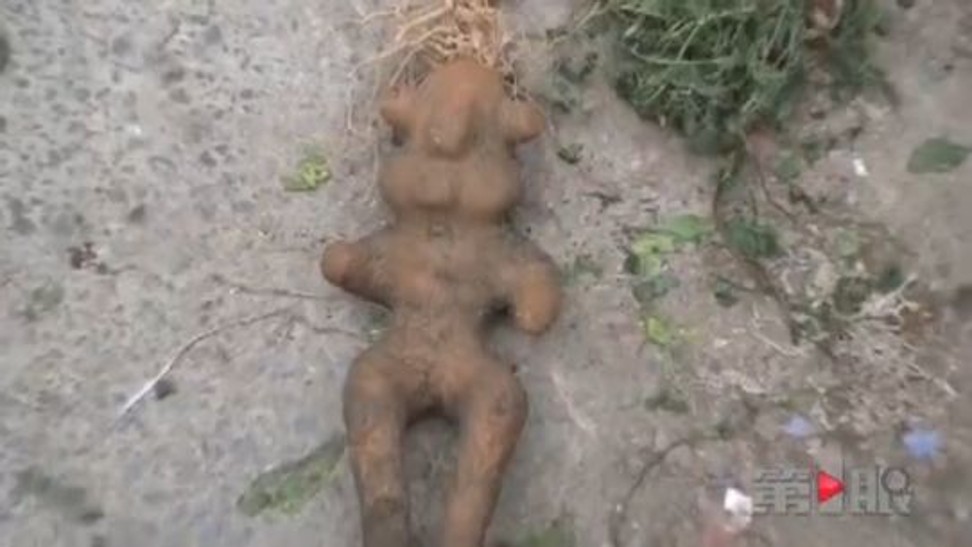
Chinese man’s giant human-shaped vegetable turns out to be a man-made fake
Massive 12kg tuber found on a building site was thought to be a valuable root used in traditional medicine, but it was actually just a sweet potato
A Chinese man who discovered a huge human-shaped root vegetable, which some people thought might be a rare plant used in herbal medicine, described his find as a “treasure”, even though it turned out to be worthless.
The man, identified only by his surname Xie, said he was amazed when he stumbled on the 80cm (2.6 feet) long tuber, which weighed in at a whopping 12kg (26.5 pounds), while he was working at a construction site in the southern city of Shenzhen, Chongqing News Channel reported on Monday.
“I was so surprised. I had never seen anything like it before,” he said. “I think it’s a treasure.”
When Xie was preparing to head home to Chongqing for the Lunar New Year holiday, he packed up the giant vegetable with the rest of things.
It was only when he got back to the southwestern megacity and chatted to his friends and neighbours that he began to think his find might be something special.
The consensus was that it was the root of a Polygonum multiflorum plant, known as he shou wu in China and tuber fleeceflower in North America.
In traditional Chinese medicine, the plant, which grows in the mountains of central and southern China, is regarded for its rejuvenating properties, with the roots used for everything from promoting fertility to restoring hair colour.
Keen to find out more, Xie got in touch with his local television station and an investigation was launched.
Members of the public interviewed on the Daily 360 show on Monday were in no doubt as to what he had unearthed.
“It’s 100 per cent a he shou wu herb – look at its leaves,” said a man who claimed to be a farmer.
A woman was more poetic in her description of the giant root.
“It could have become an elf, but you dug it up before it had chance to run away,” she said.
Despite their collective certainty, a local scientist contacted by the television station had bad news for Xie and his optimistic entourage.
“It’s a sweet potato,” said Yang Min, director of pharmaceutical preparations at Chongqing Traditional Chinese Medicine Hospital.
“When you see a root with such a regular shape, it has almost certainly been moulded into shape.”
The giveaway was the discrepancy in the proportions of the root and leaves, he said.
“This can’t be he shou wu, because they grow very slowly. The leaves are disproportionately thin compared with the root, which [to get to such a size] would have taken several decades to grow.”
Although Xie’s vegetable did not cost him anything, Yang said there had been cases of people growing sweet potatoes in moulds and then selling them on to unsuspecting buyers.
In 2016, a man in central China’s Hubei province paid 8,000 yuan (US$1,270) for a human-shaped he shou wu root, which also turned out to be a sweet potato.
While there is no evidence to support the belief that human-shaped plants are any more efficacious than their regular counterparts, in 2015, auction firm Artron Auction put an estimate of HK$200,000 (US$25,600) to HK$400,000 on an anthropomorphic root weighing just 297 grams (10.5 ounces).
Despite coming so close to a possible fortune, Xie was phlegmatic about his new “friend”.
“It probably took a long time to grow this big,” he said. “It looks like a human, and it’s wild.”




